The Nurburgring Is Now a Relief Headquarters for Flood-Ravaged Germany
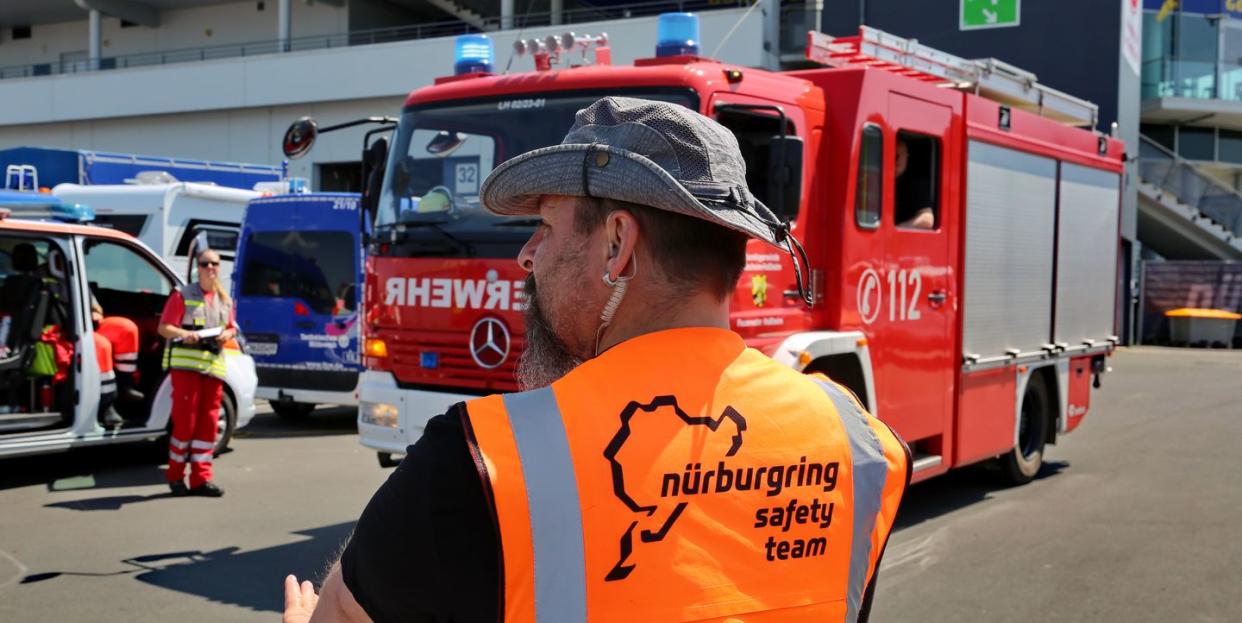
The devastating flooding across Europe was big news over the weekend, but petrolheads took special notice when the German district of Ahrweiler was specified as the epicenter of the tragedy. Kreis Ahrweiler is more often known as the home district of the Nürburgring, one of the biggest motorsports venues in the world. From World Rallycross to F1 to that 20.8-km ribbon of green hell that makes up the Nordschleife, there are a lot of reasons to love the ‘Ring.
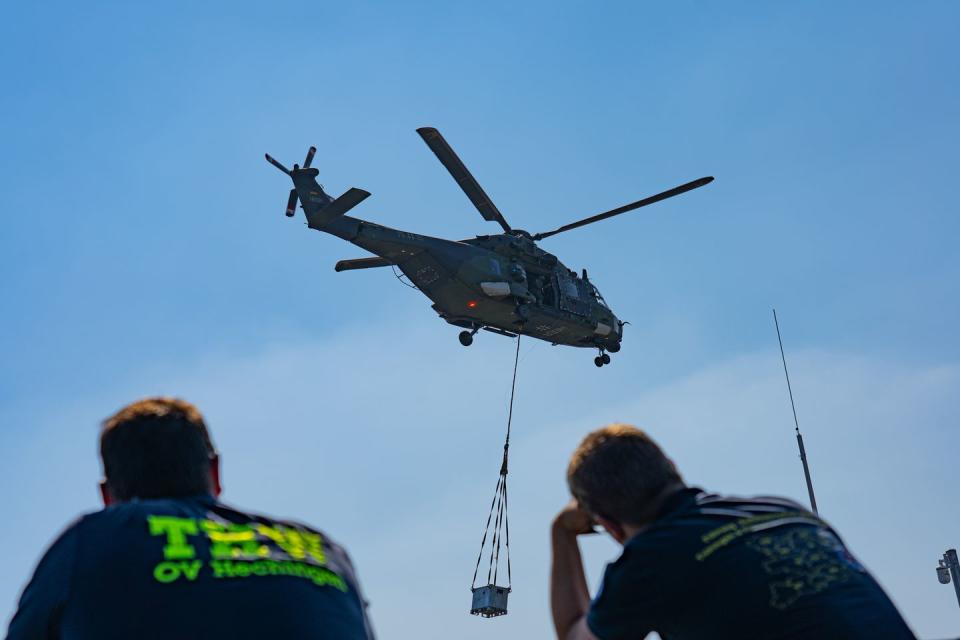
But with the tragedies of the last week—over 200 bodies have been recovered so far and more than 1000 people are still officially missing in this small town alone—the ‘Ring has found a new purpose. Its acres of tarmac are now host to the combined forces of the German Federal emergency responders. The infield of the F1 circuit has become a helipad, and its Grand Prix paddock a "Lager," or camp, for military and civilian responders.
Were it not for the much more serious sense of purpose, the atmosphere would be reminiscent of race day, with thousands of people trotting from one task to the next and a definitive busy-ant-nest vibe. Just like the Nürburgring 24 Hours, every parking lot is full and controlled, while the whole village is alive with activity. Overhead a variety of helicopters move purposefully through the skies around the castle. Medical choppers deliver and fetch personnel and patients, police helicopters help identify and communicate with stranded villages, and huge military aircraft are busy delivering hundreds of 1-ton pallets of supplies.
Shortly after the flood hit, a social media call went out for clean clothes, toiletries and household items. Just a day later, the call went out to stop delivering items to the ‘Ring; its 4000-seat stadium was full of donated goods, as was its huge under-cover boulevard. As of July 20th, the arena was still full. The white bags you can see are 1000 kg each, containing water, food and cleaning products.
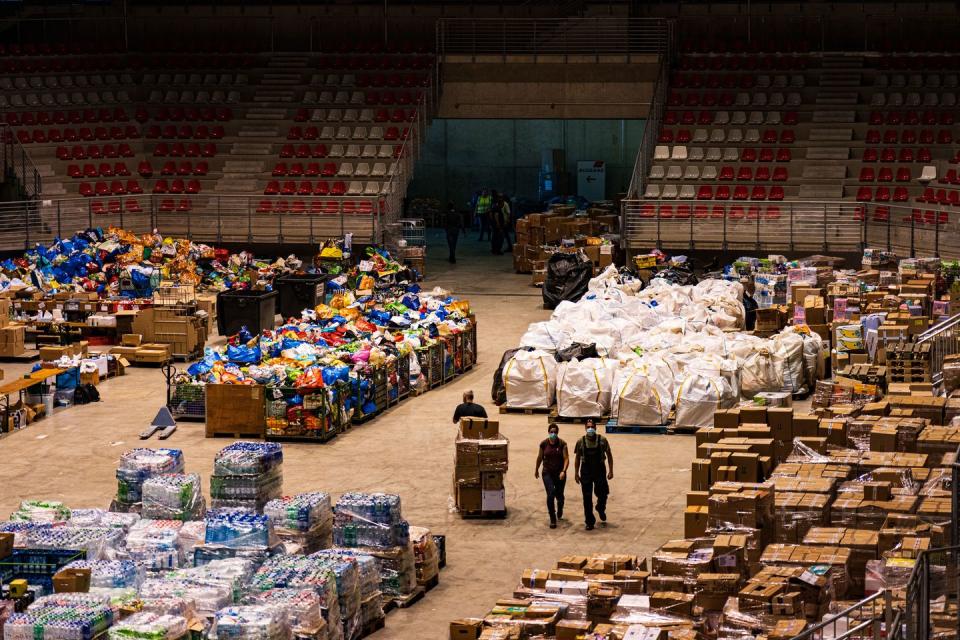
Many of the Nürburgring’s 200 staff are already out assisting in the flood-hit villages and towns. I’ve seen plenty of track safety cars, ground-works vans and Nürburgring jackets out amongst the volunteer teams and first-responders. Every staff member who has made it to the track is working to assist the Federal agencies who are now based here.
Hotels that normally cater to race fans are now housing police, firemen, and those made homeless by the disaster. The same infrastructure that can support a sudden influx of racing fans seems oddly well suited to serving the needs of a national-scale catastrophe response team.
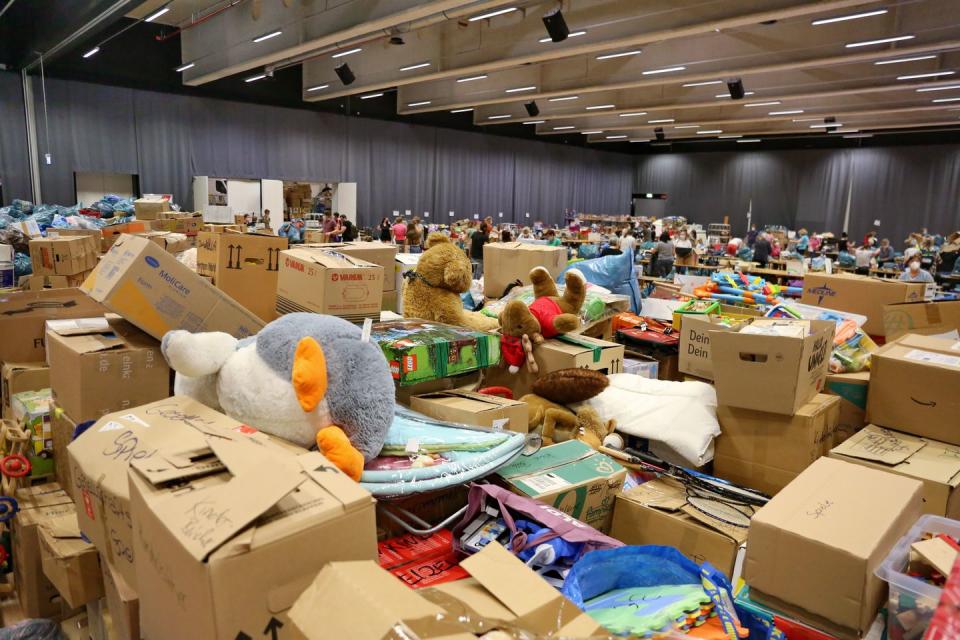
Last weekend the Nürburgring was forced to cancel the Truck Grand Prix, a race for 1200-hp semi-trucks. Luckily, the weekend of July 24-25 was to be nothing more intense than two days of open-lapping "tourist" sessions, after COVID regulations cancelled a scheduled 24-hour bicycle race.
Exactly when the Nürburgring will return to normal operations is tough to say; as of today, not a single person in the overworked team was willing to go on-record, or even guess. The Grand Prix track, for now, is clearly being utilized effectively. But the 20.8-km Nordschleife is already back to industry testing (where automakers run laps in prototypes and test mules), albeit with a skeleton crew safety team.
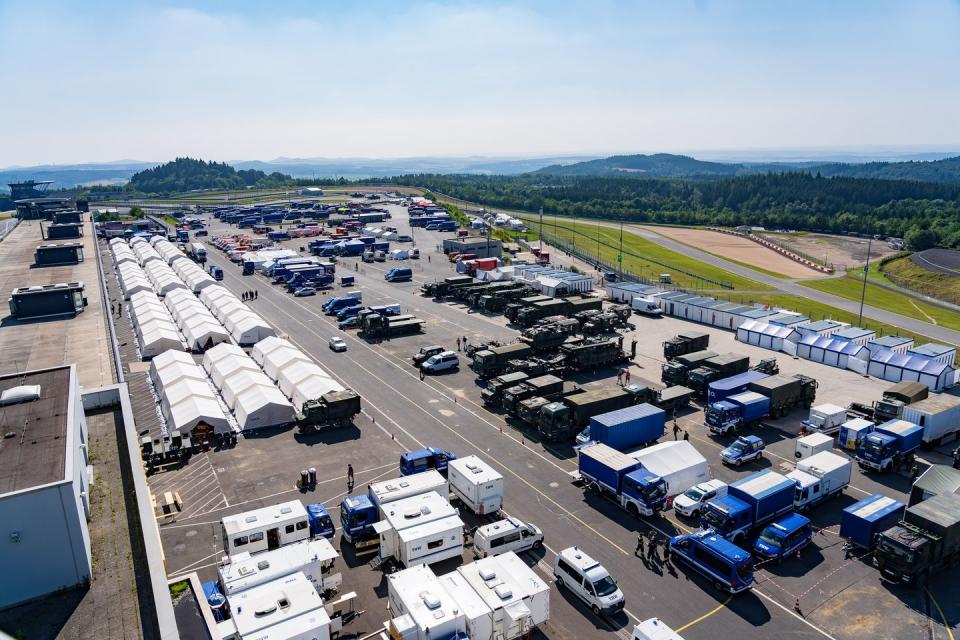
The question of when to reopen the track, hotels and restaurants to tourists is not really on the table this week. For now, there's much more pressing work to be done. Despite the previous 18 months of COVID difficulties, the Nürburgring will re-open when it's ready. Until then, the site will continue to be a hub of humanitarian activity, society at its absolute finest.
Dale Lomas is a Nürburgring expert and the founder of 'Ring news site Bridge to Gantry.
You Might Also Like

